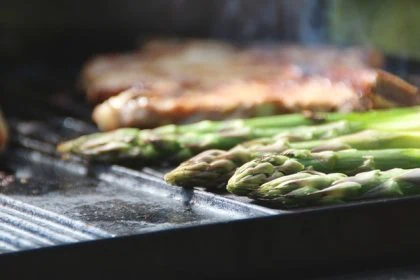In the invalidity proceedings concerning the Community design glass packaging, the CJEU clarified the evidence for the disclosure of an earlier design, in particular with regard to the proof of evidence: no binding format for the evidence is laid down.
 The facts
The facts
Specifically, those proceedings concerned an application for a Community design of the applicant Gamma-A (Latvia) for a design of a glass packaging, a transparent glass jar with a coloured, circular, removable lid. The intervener, Zivju (Latvia), filed an application for a declaration of invalidity against that design, relying on an earlier very similar design for a glass packaging produced by the Lithuanian company UAB Provit Industrija. In the following and also in today’s proceedings before the European Court (CJEU) it was disputed whether the claimed prior design had been made available and disclosed to the public pursuant to Article 7 of Regulation No 6/2002.
The Board of Appeal had considered the earlier design to have been disclosed and, in its decision against the Community design of the applicant Gamma-A, had also held that the overall impression of the earlier design was not different from that of the contested design. Gamma-A brought an action against that decision.
Proof of disclosure of a design
The applicant submitted before the CJEU that the evidence submitted by the intervener to prove disclosure of the first earlier design within the meaning of Article 7 of Regulation No 6/2002 was neither solid nor objective. And even if the evidence submitted were accepted by the Court, it could not have been known to the relevant EU circles specialised in the sector concerned, since the disputed earlier packaging was used in trade outside the geographical borders of the European Union.
Evidence of disclosure of an earlier design must objectively prove that and also when the earlier design was made public, the CJEU ruled only a few days ago for a design of a piece of furniture – we reported.
Disclosure with regard to sufficient evidence
In the present case, the proof of disclosure was disputed above all with regard to sufficient evidence.
The court emphasized that only solid and objective evidence of actual disclosure of the prior design is considered necessary evidence, but not probabilities or assumptions. However, Regulation (EC) No. 2245/2002 does not give any concrete guidelines on the evidence to be submitted for the disclosure of an earlier design, the CJEU stated that no binding format for the evidence is laid down. Although the documents submitted did not generally describe the the essential details of the packaging of the goods concerned, the information contained in those documents made it possible to link them to the first prior design, the CJEU explained.
It must therefore be concluded that the evidence submitted by the intervener to EUIPO, taken as a whole, is capable of establishing to the requisite legal standard that the first earlier design was disclosed, the Court held, stressing that the documents submitted were mutually corroborative.
Could disclosure be realistically known to the professional circles?
The court did not deal at all with the particularly interesting plea that disclosure could not realistically be known by the relevant professional circles. This plea had neither been put forward nor proved before the Board of Appeal. However, the CJEU made it clear that the Court could not take into account facts or points as statements of principle which were raised for the first time before the CJEU.
Second plea: different overall impression
By a second plea, the applicant also argued that the Board of Appeal was wrong to consider the overall impression produced by the earlier design to be similar to its own contested design. It relied, first, on the difference in the colour of the lids of the two designs and, in particular, on the fact that the scope of the design protection was extended to the contents of that packaging, since those contents were visible.
The CJEU also rejected this plea. The contents of food packaging are not part of the design, the court ruled. Also today, the CJEU ruled in the same way with the same parties to the dispute on the design of a food packaging, you can read this article here: Design of food packaging – content is no part of the design.
As regards the presence of visible foodstuffs as in the contested design, the most that can be said, the CJEU added in the present case, is that it better illustrates its purpose, namely the packaging of foodstuffs.
Great freedom of the designer
Furthermore, the Board of Appeal was right to find that, given the considerable freedom of the designer in developing the contested design, the difference in colour of the covers is not sufficiently pronounced to give the informed user a different overall impression of the contested design.
Individual character of a design
The assessment of the individual character of a design is based on that, the Court explained, whether the overall impression is clearly different from a similar design, taking into account, inter alia, the nature of the product in which the design is intended to be incorporated. The decisive factor for the peculiarity of a design is always the overall impression of difference or the absence of “déjà vu“.
The CJEU therefore dismissed the action against the decision of the Board of Appeal in its entirety.
Do you also wish to protect or defend your design?
We consider each case individually and carefully. Please feel free and welcome to contact us if you are interested – we look forward to your call!
Sources:
Judgement of CJEU, EU:T:2020:95
Image:








Leave a Reply